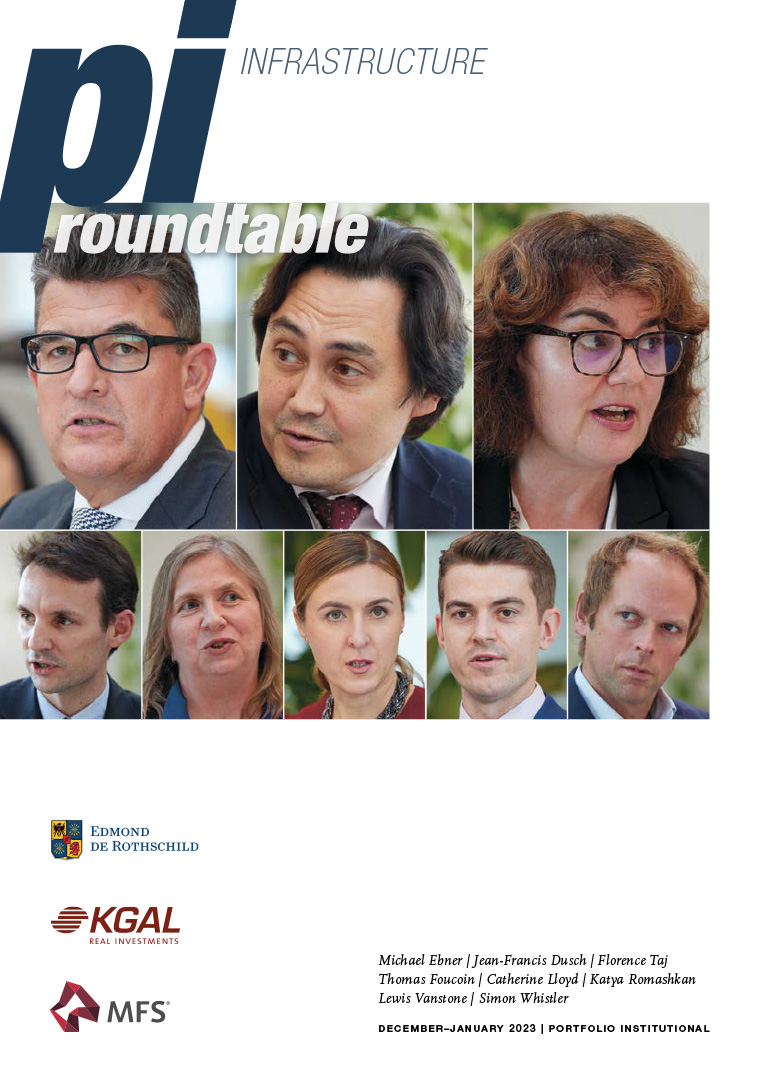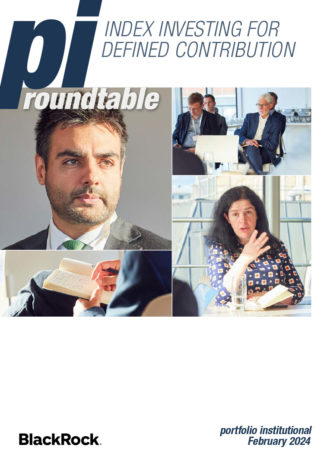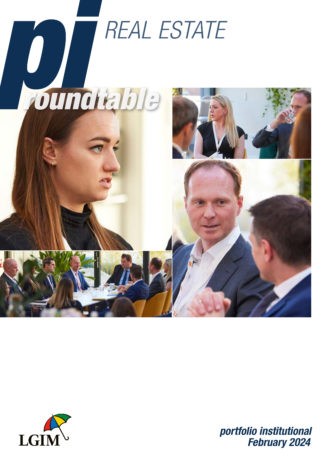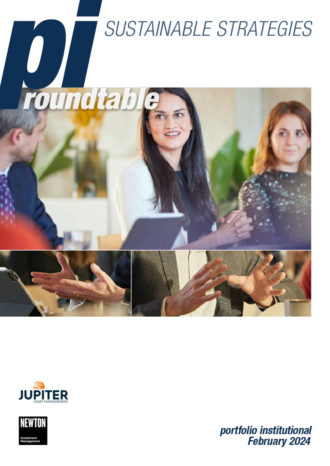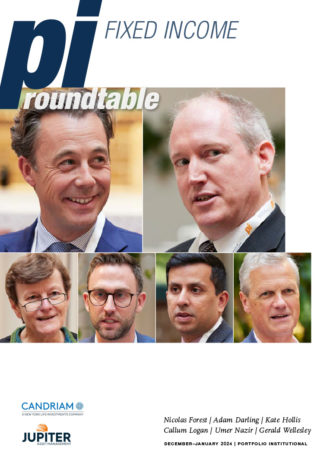The world has always needed roads, bridges, hospitals and schools, but now we can add broadband, electric vehicle charging points and wind farms to standard infrastructure networks.
The bill to repair, upgrade and modernise the world’s infrastructure as countries decarbonise their economies is estimated to be trillions of dollars. Governments can’t afford it, so they are encouraging private capital, such as pension schemes and insurers who need regular, secure and long-term cashflows, to pick up the tab.
But what are investors looking for in the asset class? And what do they think about the quality of the assets they are finding? We sat down with institutional investors and asset managers to find out.
The roundtable panel

Thomas Foucoin
Senior debt origination manager, infrastructure, Pension Insurance Corporation
Infrastructure-focused Thomas sources, structures and executes private debt transactions for PIC. This has seen him work on deals involving renewable energy, utilities, healthcare and education. He joined the insurer in 2018 from Moody’s, where he was part of the infrastructure team.

Florence Taj
Equity portfolio manager
MFS Investment Management
Florence Taj specialises in listed equities and is responsible for portfolio construction, risk control and cash management at MFS Investment Management. Taj joined MFS as a research analyst in 1999 and has held several senior positions since, including launching the firm’s Global Listed Infrastructure strategy in 2017, for which she has portfolio management responsibilities. Before joining MFS, Taj was a senior consultant at Renaissance Solutions.
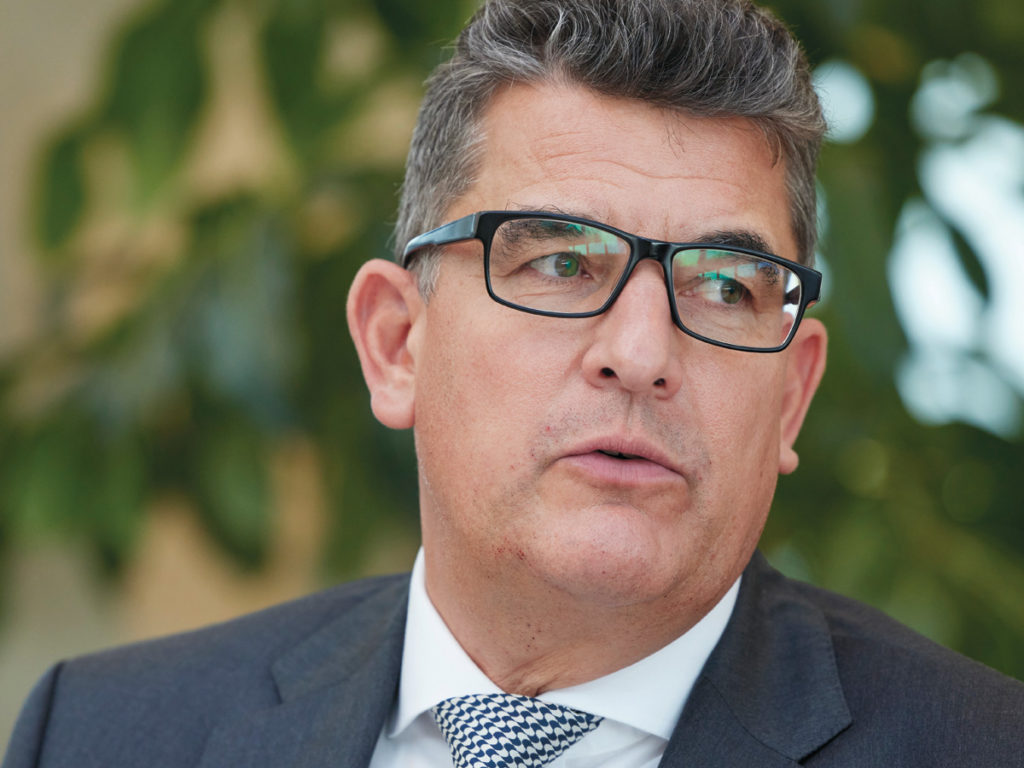
Michael Ebner
Managing director, head of sustainable infrastructure
KGAL Investment Management
Michael Ebner has held several senior real asset positions since joining KGAL Investment Management around 25 years ago. He was appointed a managing director in 2015 with responsibility for the firm’s sustainable infrastructure interests. Ebner has also held roles at Dresdner Bank and Bayerische Vereinsbank.

Catherine Lloyd
Principal, global infrastructure, Mercer
Catherine Lloyd sources, assesses and monitors infrastructure assets for Mercer’s discretionary investment products. She also advises institutional investors in Europe on their allocations to the asset class. Before joining Mercer in 2019, Lloyd worked for EISER Infrastructure Partners and provided transaction execution services to a sovereign-funded Sub-Saharan Africa Renewable Energy fund. She has worked in infrastructure since the late 1990s, starting her career with Westpac in Australia before moving to ABN AMRO, where she held risk management roles in Sydney, Amsterdam and London.

Jean-Francis Dusch
Chief investment officer, infrastructure debt, Edmond de Rothschild Asset Management
Jean-Francis Dusch has led the infrastructure debt platform at Edmond de Rothschild Asset Management since its inception in 2014. He joined the asset manager 10 years earlier as co-head of project nance. He then took charge of the structured finance team before becoming head of global infrastructure and structured finance. Dusch started his career at Bouygues Construction in 1992, where he worked in project finance until joining UBS in 1998, where he was involved in European infrastructure, energy and telecoms projects. He has also been a director at Citi and WestLB, covering infrastructure and TMT in Europe, the Middle East and Africa.

Katya Romashkan
Investment director, infrastructure
Local Pensions Partnership Investments
Katya Romashkan is responsible for the origination, execution and management of the local government pension pool’s infrastructure investments, leading the team through all stages of the investment process. Prior to joining LPPI, she spent 10 years working for construction group Balfour Beatty Investments and three years at a US infrastructure boutique.

Lewis Vanstone
Investment director, Railpen
Lewis Vanstone has been responsible for Railpen’s infrastructure assets since 2019, overseeing investments in wind power, biomass and smart metering. Vanstone, who has a 13-year track record of investing in infrastructure, is also deputy portfolio manager of Railpen’s Long-term Income Fund and managers its Growth Infrastructure portfolio. He has also focused on infrastructure at Foresight, PwC and for SSE on the sale of its non-core infrastructure assets.
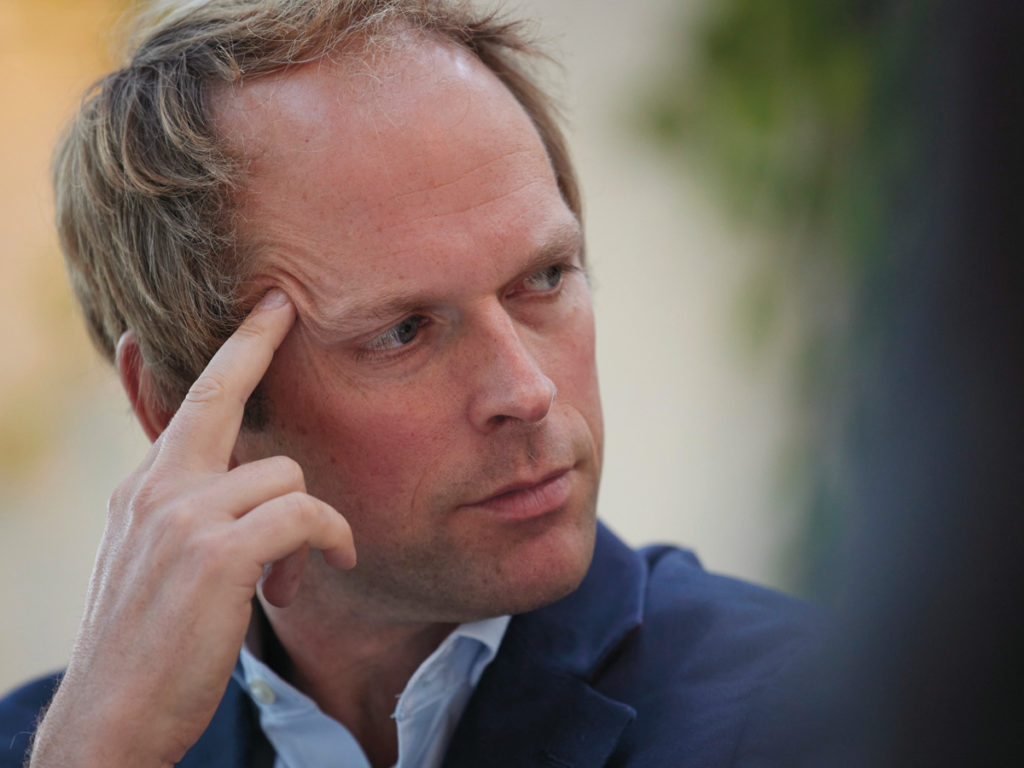
Simon Whistler
Head of real assets
UN Principles for Responsible Investment
For the past four years, Simon Whistler has led the PRI’s work on real assets. He supports asset owners to integrate responsible investing into their processes. His work has included developing guidance for real assets on implementing the recommendations of the Taskforce for Climate-related Financial Disclosures.
The discussion
What infrastructure assets are institutional investors interested in?
Thomas Foucoin: Fundamentally, we insure more than £30bn of defined benefit pension liabilities, with a significant market opportunity, and we need to source long-term, stable and, where possible, inflation-linked, cashflows to match the pensions of our policyholders. That is why we invest in infrastructure debt.
There is no specific sector we target, but there are things we like. We have invested significantly over the years in social infrastructure. A good example would be student accommodation, which presents an opportunity for us to invest our policyholders’ pensions in projects that benefit future generations.
We also invest in assets which support the energy transition. Renewable energy has been an important part of our pipeline in the last few years. In particular, we have invested in offshore wind farms in the UK and solar projects across the continent.
Lastly, we finance assets which are critically needed to modernise the economy and are useful every day for local communities. One such transaction we financed was a fleet of rolling stock, including several electric trains, connecting Birmingham to other cities and towns in the Midlands.
Lewis Vanstone: We make debt and equity investments looking for contracted, inflation-linked cashflows for our members. We have the flexibility to make unlevered or levered equity investments where we see explicit inflation-linked contracts. That is through our Long-term Income Fund, which has around £2bn of committed capital.
We also have a growth infrastructure pot of some £500m which is aimed at investing in assets earlier in their lifecycle – at the greenfield, development or construction stage – and the intention is to keep them within the scheme long term.
We are sector agnostic, investing across all infrastructure sub-sectors. Recent investments have been energy transition focused, including wind, biomass, smart metering, waste and battery storage.
Katya Romashkan: We invest across various sub-sectors, mainly energy, waste, transport, social and regulated utilities. We have done quite a few transactions in the energy transition space. We have bought into wind farms, but at the same time backed a battery storage developer, which is an energy transition story rather than one of pure renewables.
We are an equity investor. Although we can invest across the capital structure, low interest rates in the past 10 years meant that the risk/return profile was not attractive enough for us to invest in debt. Obviously, things are changing.
Our assets need to have certain characteristics. We are a core-plus infrastructure investor, so contracted inflation-linked cash flows, long-term durations as well as having governance and control, which for equity investors is important.
What role does infrastructure play in institutional portfolios?
Jean-Francis Dusch: Investing in infrastructure is impact finance, to a certain degree, as institutions are conviction, ESG and regulation driven.
ESG integration is important, especially in light of SFDR [Sustainable Finance Disclosure Regulation] and Europe’s energy transition bet. Alongside long-term matching assets and recurring and predictable revenues, infrastructure brings a natural diversification to portfolios.
The energy transition is broad. It is traditional renewable energy, but also second-generation sectors such as battery storage, hydrogen and hydroelectricity. It also expands to green mobility and social infrastructure with energy efficiencies for the more traditional infrastructure. Decarbonisation of utilities is also a key component of the energy transition.
It is also about jurisdictions and regulation. Our investor base was in Europe, but we are becoming more global and there are different regulatory frameworks to consider. Financing situations are also broad. You associate infrastructure with project finance, with new assets, but pension funds want yield on day one. There is, therefore, a lot of refinancing and acquisition finance we extend for assets in operation.
An important point is that you can have various horizons in terms of the tenor of the debt. Equally, you can be at different levels of the capital structure from senior investment-grade debt to BB-rated junior debt, whilst still bringing strong resilient infrastructure assets to our investors. There is, therefore, significant diversification in this asset class.
Michael, in the conversations you are having, what do institutional investors want from this asset class?
Michael Ebner: Inflation linkage, long-term exposure and impact investments, which is why we concentrate on the energy transition. Investors have been used to secure structures, to feed-in tariffs and regulated assets, but this world has gone, especially in the renewable space. Infrastructure investors now have to take some merchant risk.
Of course, you can hedge your exposure by contracting your generation, but there is a shift in the infrastructure sector from a conservative inflation-linked exposure to a more merchant exposure. That makes sense, given the turmoil we are seeing in the industry.
We have seen problems in the equity and fixed interest markets, but infrastructure has been stable. That’s especially true for renewable energy, where we are seeing higher valuations compared to pre-crisis levels as a result of it serving the public’s needs and rising energy prices.
We can answer concerns from investors by showing that investments in renewables have proven strong in a regulated case 10 years ago, in a secure environment five years ago and during a crisis in the last three years.
These are operational assets. That’s the major difference to other asset classes. There are moving parts and things happen in this sector.

What problems could listed infrastructure solve for investors?
Florence Taj: Listed is a nascent part of infrastructure investing. Most people around this table are involved in private infrastructure, but the listed side has many advantages for pension funds. The first is that there is a huge investable space. The FTSE benchmark we use has a $3trn (£2.4trn) market cap of companies listed globally that are involved in the infrastructure space, which have stable regulatory frameworks, long-term cashflows and inflation adjustments.
That space is rarely accessible to investors in a low risk, diversified packaged fund that is liquid. We are trading on huge markets, we do not have gating in place. In an environment where liquidity is becoming more important, having listed infrastructure complement private is a great option to play in that space without some of the drawbacks that we see on the private side.
The second point is quite topical in that valuations on the listed side are often much lower than they are on the private side. For example, when Vodafone sold its Vantage Towers business to KKR and GIP, the valuation they received was 30% above what listed companies are trading at in Europe.
That speaks to a lot of money being raised on the private side that is trying to find a home and the natural home for deals that make a difference is the listed market. It makes sense for pension funds to take advantage of that valuation difference.
Catherine, what are institutional investors discussing with you and your colleagues when it comes to infrastructure?
Catherine Lloyd: ESG is front of mind. It is a hard rule that many European investors must have Article 8 funds as a minimum. They will not consider anything less.
In the US some investors are wary of that. They are not sure whether the SFDR regime and the EU taxonomy are reducing the effectiveness of their infrastructure investing. They are wary of investing in those types of products, preferring to stay out of it.
We are seeing a lot of potential investors in the infrastructure space. There are lots of typically smaller pension funds that have not yet explored investing in infrastructure or in private markets.
We are also seeing investors that are looking to unlisted infrastructure, which is a relatively small part of their investment portfolio, to deliver a disproportionate share of their carbon emissions reduction target.
Simon, infrastructure is vital for economic growth, but how important is infrastructure when it comes to building a sustainable world?
Simon Whistler: It is fundamental. Ultimately, we are not going to achieve the energy transition without massive investment in infrastructure across the world. You cannot underplay that part of the conversation.
It is easy to state that investing in renewable energy or battery storage are sustainable or impact investments, but it’s also important how you manage the assets. There is a lot more to sustainability than simply owning or investing in a wind farm.
There are also supply chains, how you manage communities and so on. It is good that more money is flowing into those assets, but how those assets are managed and looking further down the chain are fundamental parts of it as well.
So, there is more to the energy transition than wind farms and solar parks?
Whistler: The industry needs a clearer definition of sustainable infrastructure. There are lots of infrastructure funds saying that they are sustainable, but everyone will have different definitions of what can go into them. Renewable energy is part of that, like battery storage and smart meters, and digital infrastructure – there are lots of things that people are looking at.

We have seen returns in the renewable space come down to levels where the underlying risk of owning a wind farm can make it uneconomical in some cases.
Katya Romashkan, Local Pensions Partnership Investments
With so much political will behind renewable sources of energy, and with investors building sustainable portfolios, why isn’t renewable energy booming?
Ebner: It would be booming if governments accelerated the permitting process and force grid operators to offer more connection capacity. There are also some issues in the supply chain. For example, it can be problematic to procure wind turbines for a fair price from China and ship them to Europe.
Finally, interest rates have risen. We are often asked if energy transition assets can cope with the interest rate rises we have seen during the past month.
These are the reasons why renewables are not booming as well as they could be. Nevertheless, efforts on the political side to overcome these issues will drive a massive increase in sustainable infrastructure in the months and years to come.
Dusch: It is an interesting point about interest rates. When we launched our infrastructure debt offering in 2014, generating between 4% and 6% for senior investment-grade was the prevailing yield.
Then rates became negative and generating a 2.5% yield almost made you a hero. To a certain degree, the interest rates we observe are back to historic levels of 10 years ago and we capture it in our infrastructure debt investments.
But renewable energy prices have also risen meaning that equity-holders of such assets can probably afford the higher cost of debt as they also capture higher inflation.
Is this a long-term trend? Governments might intervene to control energy prices. But in the meantime, equity-holders can generate significant returns.
As creditors, we are careful because when equity investors generate target returns more quickly, they might consider selling their investments to other equity-holders that we might be less comfortable with. But we can document protections to mitigate the associated risk.
Ebner: In Germany, we are seeing high power prices, but the outlook forecasts a heavy price decrease in the years to come. We will return to lower levels, maybe not to pre-crisis levels, but we have locked-in high interest rates.
Some of our portfolio assets are benefiting from the current scenario, but it’s a short window of opportunity. We can lock-in assets now at a relatively low cost for a short period of time with these higher power prices, but our forecasts are based on low power prices.
An educated guess for the next 20 years is that we will see power prices in the area of €50 (£43) to €60 per megawatt hours, which is roughly 30% of the current spot price. There is a definite price decrease, which does not affect the asset if your business plans are sound and long-term oriented.
Dusch: That is almost twice the level at which we contemplated sizing the debt for many assets we have financed in the past few years.
Ebner: I would assume that those assets have hope for higher power prices in the years to come.
Foucoin: This speaks to the challenges of investing in renewable energy, especially for institutional lenders like UK insurers. We are Solvency II-regulated, matching-adjustment investors, which means our focus is on the investment-grade segment of the infrastructure market.
Volatility in power prices poses a challenge in terms of what structures work for investment-grade debt investors. We have invested in several wind and solar transactions over the years, whose cashflows were either regulated or fully contracted until the debt matures.
Nowadays, however, we see a lot of projects which are partially exposed to fluctuating power prices, especially towards the end of the debt’s maturity. The goal for us is to find structures which achieve an investment-grade status, and deliver the stable, predictable cashflows needed to match the pension payments we have on the other side of our balance sheet.
Taj: In terms of investing in renewables, some wind farms were built on a merchant basis, which can be quite volatile, but there are other ways to play the energy transition.
For example, utilities are about 50% of the listed benchmark. They used to be viewed as stale and boring with no growth, but they are a huge beneficiary of the energy transition because to connect renewables, you need to build up the grid.
The grid traditionally was built around a centralised energy infrastructure, where you had a huge coal or nuclear power plant supplying power directly to the end user. Now, there is a need to build connections for renewable energy to flow into the system.
Also, at the user level, distribution networks need to be built to support, for example, electric vehicle charging in the home, which requires a lot more power.
My point is, you can invest in this transition without taking merchant risk because utilities have regulated frameworks in place to remunerate them on that capex. If you look, for example, at US utilities, they are growing their earnings per share by 6% to 7% on the back of all the investments that are needed to make the energy transition happen.
It is important to have a broad view of how you can play these trends without necessarily taking a lot of merchant risk.
Ebner: In principle, I agree with you. In detail, I don’t. There are utilities which are not performing under the current scenario. German utility Uniper and other utilities, especially municipality-owned, are suffering.
Translated into more general words, you do not always get infrastructure-linked, highly regulated exposure when you invest in listed or unlisted infrastructure assets.
Taj: You are right because not all listed assets in this space are worth investing in. Uniper buys gas from Russia to sell it on. In this environment, that’s a terrible business model.
It is the same with Vestas and other sustainable energy-focused manufacturers who are in quite a weak position against the big renewable developers.
The key in the listed space is to find companies that have regulated assets and long-term power purchase agreements. In Germany, probably the closest to that would be RWE, which is transitioning to that model. You have to do a proper analysis to make sure that you do not end up with a stranded asset.
Lloyd: In addition to those issues, investors prefer operating assets. Not as much capital is willing to invest in new builds, which is holding back the expansion of renewable energy. Investors want yield so greenfield does not work for them. Obviously, the more greenfield exposure you have in your portfolio, the longer it takes for yield to come through and the deeper your J curve. That deters quite a few investors.
With rising inflation and the invasion of Ukraine putting concerns over energy security in the headlines, is anyone seeing a change in attitudes towards renewable energy?
Vanstone: From my perspective, there is quite a lot of capital flowing into greenfield renewables. We are seeing more parties in the operational renewables space, making it a highly competitive market and some investors are looking at adjacent are as for higher returns.
It might be oil and gas vessels which are transitioning to maintenance for o shore wind farms. Even in the battery storage sphere, some infrastructure investors are going straight to the optimisers who do not own the assets but run the revenue operations and take a share of revenues.
So you can participate in investments adjacent to the renewables build-out and the energy security side of things.
Lloyd: We are seeing more interest in transition assets than traditional renewable assets. It is seen as the more exciting part of the space.
Romashkan: It is due to return compression. We have seen returns in the renewable space come down to levels where the underlying risk of owning a wind farm can make it uneconomical in some cases.
Long-term pension funds have to be selective on where they come in. When we were doing the Hornsea One deal [a wind farm off the Yorkshire coast] it was a syndicated play, so we did not have to compete on price.
There are certain characteristics you need to pick out rather than everyone piling in, which makes it too competitive.
Vanstone: Even within the UK contract for difference (CfD) regime, risk allocations are shifting. We have gone from the first allocation round where there was little negative price risk, so you get your CfD support in most circumstances, to one where if the day ahead price is negative then that support has gone.
You need to forecast that in terms of impact on returns, which is difficult. Then you need the ability to switch off, so you are not taking on negative revenue and cost.
Dusch: What is important to consider when talking about the energy transition is the word “transition” itself which also covers the transformation of assets. Equally, within the renewable energy sector, we now have assets reaching a 15-year lifespan, begging the question of whether to upgrade them or decommission them with the related impact.
Regarding the transformation of brownfield assets, utilities are an example of where we are seeking to decarbonise existing infrastructure. This is an important part of implementing the energy transition.
The EU’s “Fit for 55”, for example, seeks a 55% decrease in C02 emissions by 2030. It is important to know how you get there. Our role as an asset manager is to explain why some investments contribute to reaching such goals.
This brings numerous investment opportunities. In doing so, we have to de-risk. Which brings us, among other things, to the technological and regulatory risks mitigation debate. Even more so as there is a technological shift involved in the energy transition.
I agree that there are many merchant plant investment opportunities now, which does not mean there are no feed-in tariff regulated assets.
Ultimately, we worked with industrial players to get comfortable with the risks, and how to mitigate them, to bring safe assets within the mandates granted by our investors.
Whistler: That’s a great point about the way assets can be transformed. We are having more conversations with investors explicitly looking at decarbonising their assets if they can, how and by what year? Ultimately, it comes down to if it is going to be financially viable.

In an environment where liquidity is becoming more important, having listed infrastructure complement private is a great option to play in that space without some of the drawbacks that we see on the private side.
Florence Taj, MFS Investment Management
It is interesting because this is not just about investing, it is about ownership. How is the UN PRI working with asset owners to improve the impact of these assets?
Whistler: A lot of it is focused on how investors engage with their assets. Ultimately, it’s what targets they put in place to manage those assets, such as reducing carbon emissions. Then there is how do you engage on the social side, thinking about human rights when looking at the renewable supply chain.
A lot of our focus is on engagement, understanding where you as an investor have leverage over assets and portfolio companies, even where you might be in a minority position or how you work with your fellow investors on a particular deal. That is an important part of what we do.
Vanstone: Railpen is a £37bn scheme and invests around £2bn to £3bn in infrastructure. Scarcity of assets in the renewable space has been a barrier for quite a while.
Scale is another. We look at individual tickets of around £100m but some of the larger offshore wind and energy from waste assets are worth billions, so we need to partner with others. We have a preference not to have leverage. That’s another challenge on scale, as it’s commonplace to have leverage in a number of these assets now.
The other point is governance. If we have a small stake in an asset, from a governance perspective, our rights are limited. The alternative for us investing across the capital structure is to go in as part of the debt rather than being a minority equity investor that has little in the way of rights.
Foucoin: PIC has a similar appetite for large ticket sizes of around £75m to £150m when we invest in infrastructure debt. Some constraints come from the supply side, and where to find investable transactions.
We have a lot of UK pensioners to think about and would like to invest in even more projects and companies which can improve local economies and benefit communities across the UK.
In reality, there is only a finite number of infrastructure projects and issuers which match our investment parameters in the UK. As well as helping to stimulate the UK market, we are, therefore, also financing projects elsewhere in the world, including continental Europe.
The government can play a role in attracting capital for large projects that transform the infrastructure landscape by setting the right regulatory framework to allow institutions such as PIC to invest. This may be addressed from an insurance perspective by the reforms to Solvency II, but it needs to go wider.
An example of a project we financed a few years ago is the Thames Tideway Tunnel, a sewer underneath London which protects the Thames from pollution. The project had a pretty comprehensive regulatory framework attached to it along with a support package provided by the government, which allowed institutional capital to finance it.
We wish to finance more of these large civil engineering projects, which are ideally suited to provide stable, predictable long-term cashflows to match our pension liabilities.
Who is putting institutional investors and infrastructure projects together?
Romashkan: You source them yourself. Sizewell C [a proposed nuclear power plant] is coming up and the group behind it has been quite vocal about the need for equity.
It takes a while to invest in greenfield infrastructure projects. They are not only long term, but have long build-up periods, too. We are not seeing much from the government, so we have to do it ourselves or look beyond the UK. For us, Northern and Western Europe are interesting jurisdictions.
Dusch: As an asset manager, if you depend on government infrastructure plans to source your deals, you might be too late by the time such projects are live.
Of course, it is key to be close to governments to understand and anticipate the forthcoming trends and offer proprietary investments to our investors. The key to sourcing deals is to talk directly to the equity-holders.
If you want to structure debt that is in line with the pension fund’s mandate, while creating that paradox of securing the debt whilst obtaining the most attractive yield, you need to come early and ideally talk directly to the financial sponsors.
In essence, we are always on the sponsor’s back to have early and proprietary access to investments. We want to be a price maker when arranging the debt.

We are seeing more interest in transition assets than traditional renewable assets. It is seen as the more exciting part of the space.
Catherine Lloyd, Mercer
Foucoin: We value durable, long-term partnerships with sponsors and issuers in the infrastructure market. These relationships usually come from doing an initial transaction, and then repeat transactions with the same people. Creating long-term, direct partnerships with key players in the infrastructure market has been an important factor in shaping PIC’s role as a lender in the sector.
One way we achieve that is by offering as much flexibility as possible to the borrowers. Some of the things we do, for instance, include providing deferred drawdowns which can be useful for sponsors, especially when they seek to deliver projects involving an initial construction phase. As an institutional lender, we can also go long in terms of maturities, when we are comfortable with the credit profile of an asset or company.
Whistler: Every country should have a nationally defined contribution under the Paris Climate Agreement and/or a strategy built around the Sustainable Development Goals. There should be something coming from government to set a clear direction. We are seeing things coming out, such as the EU’s Fit for 55, but there needs to be more direction, much more consistency in terms of strategy and planning from governments.
Having three prime ministers in the UK in a few months does not help, but this is not the only country where there is political instability and a lack of structure around this.
There has to be a role for governments going forward. It would be great to see more engagement between governments and industry and with developers as well. There need to be more connections throughout the chain.
Taj: Government has a role to play, but increasingly we will see corporations driving the transition. We see a lot of corporates, like Amazon and Google, contract out wind farms to renewable operators, so the government has nothing to do with it.
After the energy crisis in Europe, more companies will probably look to secure their own energy sources so that they are not hostage to gas curtailment, such as we have seen in Germany. They will also try to secure those sources over the long term to help reach their decarbonisation goal. In my world, that is a key issue and we constantly engage with corporates to under- stand how they are going to affect that energy transition. Investing in renewable energies is one aspect of that.
The transition, which was initially spurred on by governments because the technologies were not economical without subsidies, is going to be a lot more corporate driven long term. A supportive government framework would be helpful, but it is not essential anymore.
Lloyd: It is not that the corporates are taking that initiative themselves, it’s the consumer that is demanding it.
For the companies you mentioned, the demographic of their consumers are focused on this. They are demanding that these companies do something, and they are listening.
Taj: There are also a lot of initiatives in hydrogen. A lot of chemical companies want to use it in their processes, instead of gas. In our fund, we play that through the industrial gas companies with Air Liquide and Linde heavily involved. A lot of the assets being built, such as electrolysers, are financed by corporate and private money with no government involvement.
The government has a big role to play in terms of not interfering too much in the sector, which is going to broaden out beyond government control going forward.
Dusch: We have discussed the energy transition and the importance of ESG, but we have focused on the E. Infrastructure also serves society. If we look at the S, the topic we have not discussed is digital infrastructure.
We saw it during the Covid pandemic with remote schooling, people being diagnosed remotely and working from home, but it is a big part of the allocation for pension schemes. We probably have more than 20% exposure to digital infrastructure.
We were a true believer of it because of the impact it has on society. It also contributes to the environment as some people may travel less thanks to video conferencing.
We invest significantly in renewable energy, but there is a much broader way to contribute to the energy transition and be ESG focused, as explained earlier.
Taj: Telecom towers is a great digital infrastructure investment because with the transition to 5G more robust wireless infrastructure is needed along with a denser network of towers. It goes beyond the energy transition.
Ebner: How do you consider a tower as a sustainable investment? Everyone is seeking exposure to sustainable infrastructure, but I do not see towers as sustainable, despite their economic viability.
It will be hard to find sustainable infrastructure as not all investments in the social space are.
Whistler: It comes back to the definition of what is sustainable. In the environmental space it is easier to define what that is based on metrics such as carbon emissions or agreed pathways to net zero.
When it comes to other assets, you are looking much more at the social and governance side of ESG. What are you measuring there? What is the social value that you put on digital infrastructure?
I cannot answer that directly, but it is an essential piece of the puzzle. It is important that we move the conversation away from just focusing on the environment. It needs that definition to make it clearer.
Lloyd: Some managers look at it on the basis of how they manage their assets. If they are short-term focused, they will sweat that asset for as long as they can and then sell it, passing the problem to someone else.
If their focus is long term, they want the asset to be there for the next generation and the generation after, so they maintain it to avoid wastage and do not have to replace it.
Dusch: We believe that committing to SFDR Article 8 is strong in the current understanding and application of the regulation. We documented it in our funds’ placement memorandums, which comprise meeting key United Nation’s Sustainable Development Goals.
For each asset, we also measure CO2 emissions avoided and the classification against the 2050 global warming reduction targets. Social impact is a big one. Infrastructure development and operation creates jobs.
Back to digital infrastructure, we have seen that it contributes positively to social well-being. We can argue that data centres can be sustainable as technologies limiting the heat they generate is available. One can also build the social infrastructure around them using sustainable materials, while the data centre can be fed by renewable energy. This part of the sustainability challenge.
Whistler: In the end, it’s how everything fits together in a system. It is easy to look at one asset in isolation and say it is sustainable, but everything is the sum of its parts.
Dusch: We are a believer of the interconnectivity of infrastructure. Countries need to build a comprehensive set of infrastructure to provide the services society needs. Then you can look at an asset from its integration into a sustainable global infrastructure.

Scarcity of assets in the renewable space has been a barrier for quite a while.
Lewis Vanstone, Railpen
Is there much difference in regulation when investing in Europe compared to the UK?
Dusch: It depends on what you are talking about. SFDR is one regulation with a different interpretation from one EU country to another. There are so many ways, for example, to look at feed-in tariffs. In Europe it is a tall order because there are different ways for governments to tender concession agreements – the PPP scheme in France, the availability scheme in Germany or private finance initiative in the UK are all proven but different to one another.
You have to be humble in analysing regulation, seeing what aspects are important to deliver on the mandate from investors. We read that the UK is considering implementing a similar directive to the EU’s SFDR and taxonomy. It will be interesting to see if the scheme that is implemented addresses some of the concerns around interpretation of the EU regulation.
Taj: From a listed-equity perspective, we do not go into the project-by-project regulation detail, we invest in companies that do it for us. Our focus tends to be on broad-based regulations, such as how the network returns are set, how often and what the parameters are.
I can imagine that on the private side there are only a few deals you can work on at any point in time, because you have to understand every detail. Whereas on the listed side we can scale up quickly because we do not need to go into that level of project detail. We can still have a view on regulation, but we are able to invest across assets, across geography more easily.
It is easier to have a diversified portfolio of assets, whereas in the private world, it takes a long time to get up to speed to understand all the details, so this is a different way of investing in the space.
Romashkan: It depends on whether you are a passive or an active investor. Publicly listed equities will probably fit someone who wants to be a passive investor in infrastructure, whereas pension funds tend to start moving more towards the Australian and Canadian model.
That’s being an asset owner, so they can exert control, governance and then through that can come the implementation of various ESG and responsible investment initiatives into the company by being active.
Taj: To be effective at doing that, you need to be a big fund. It is difficult for smaller schemes to get that expertise and the time to get involved at that level of detail and to understand what to focus on from a governance point of view.
It is complex if you are not a large player and you want to get involved in infrastructure. It is a tall task.
Foucoin: From a lender’s perspective, another way to gather the data and information we need from our investments, regardless of local regulations, is to negotiate the right covenants with the sponsors. For instance, we have been able to negotiate ESG covenants aligned with our own reporting standards in some of our transactions.
This is pretty powerful and hopefully some of the provisions negotiated for our recent investments can be replicated going forward and becomes more standard in the market.

Volatility in power prices poses a challenge in terms of what structures work for investment-grade debt investors.
Thomas Foucoin, Pension Insurance Corporation
What returns are infrastructure assets yielding?
Foucoin: We are a relative value investor, so when we invest in a piece of private debt it needs to generate a premium above equivalent public bonds of the same duration, credit quality and in a similar sector. This is the framework we use to price infrastructure debt transactions.
Dusch: One measure of performance is the spread we generate. Our senior investment-grade portfolios deliver a 250 basis points (bps) margin over base rate. In the Junior BB space, it is 550bps.
If you look at the base rate rise, investment-grade debt we invest in is at 5.5% to 6%. A year ago, when rates were negative investors were pleased with our ability to floor the base rate and bring a spread of 250bps.
Our ability to do fixed or floating rate transactions, captures the higher base rates, keeps our asset class attractive compared to corporate or sovereign bonds, for example.
Ebner: In equity, life is more complicated. We cannot argue on spreads because pricing for equity is not as elastic as for illiquid assets. In essence, real assets, be it real estate or infrastructure, tend to maintain their valuation and, therefore, the return expectations are stable.
This brings me to our understanding of the market. We form a view whether a certain equity risk exposure brings along a fair risk/return profile. Ten years ago, a brownfield investment was fairly priced. Five years ago, it wasn’t. There was so much capital in owing from equity investors for brownfield assets that the risk/return profile was too low – it was tendered to death.
We changed our strategy to a more risk-assuming strategy and entered the value chain much earlier, creating higher returns. It is always in the view of investor whether this is a fair price risk/return profile.
As a result of the increase in risk, somehow the equity returns have to come up as well. It will take longer when compared to the volatile debt markets or equity markets, but equity returns will come up.
Taj: In the listed market, we cannot guarantee returns because we are tied to the broader equity market. Typically, what we see is a 3% to 3.5% yield and 6% to 7% earnings per share growth for a 10% total shareholder return.
Comparing returns on listed infrastructure companies going back 20 years with private returns, they are almost the same. Obviously, there is more volatility around the listed returns, but in the end they converge. That is effectively because you are investing in the same types of assets, but the fees on the private side are high.
Although you get a higher net headline return, it is quite competitive with the listed side. For long-term investors, people may not have the sophistication to get involved in managing the asset and to go through the nitty gritty of regulation, listed is a good alternative on the infrastructure side.
Vanstone: Like many pension schemes, we have inflation-linked liabilities and so have inflation-linked return targets. At the moment, we have to try and take a view on what long-term inflation looks like.
Spread wise, for us at the core end of infrastructure across a blend of debt and equity, we are looking at up to 2%. For growth or greenfield infrastructure, it will probably be close to double-digit return requirements with the recent increase in risk-free rates.


